Physical Address
304 North Cardinal St.
Dorchester Center, MA 02124
Physical Address
304 North Cardinal St.
Dorchester Center, MA 02124

Bitcoin (BTC) is slightly lower, trading around $96,500 on Friday after recovering over 2.5% this week, with historical data showing modest January average returns of 3.35%. Metrics across the chain suggest that the bull market remains intact, indicating a cooling off phase rather than the peak of the cycle.
Bitcoin started the year with a modest recovery, trading above $96,000 on Friday, after falling more than 10% in the past two weeks after hitting a record high of $108,353 on December 17, 2024.
According to Bitcoin’s historical monthly returns, BTC generally delivered modest returns to traders in January, with an average of 3.35%.
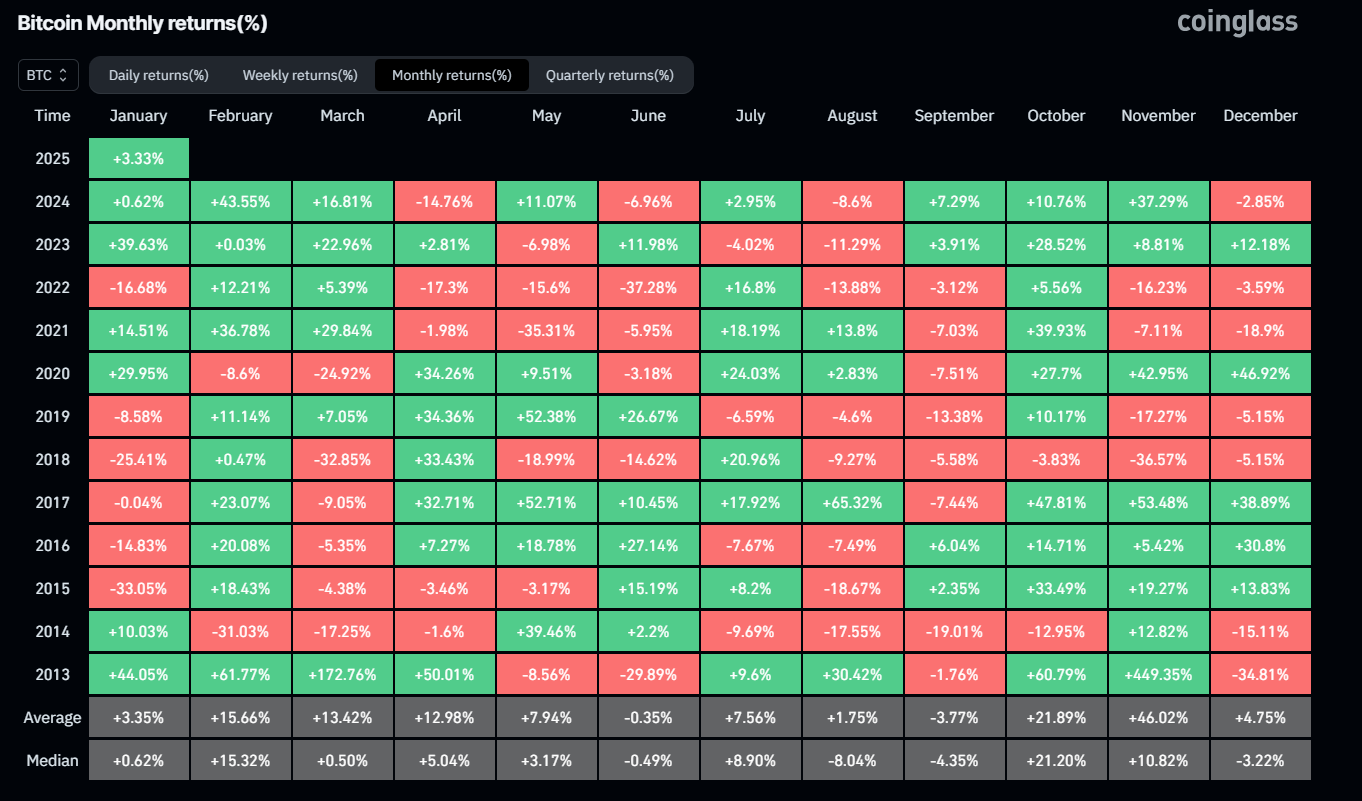
Bitcoin Monthly Returns Chart. Source: Coinglass
Institutional demand continued to weaken this week. According to Coinglass, Bitcoin Spot Exchange Traded Funds (ETF) data saw a total net outflow of $657.6 million through Thursday, following an outflow of $377.6 million last week. If the outflow intensifies or continues, it could cause the price of Bitcoin to fall.
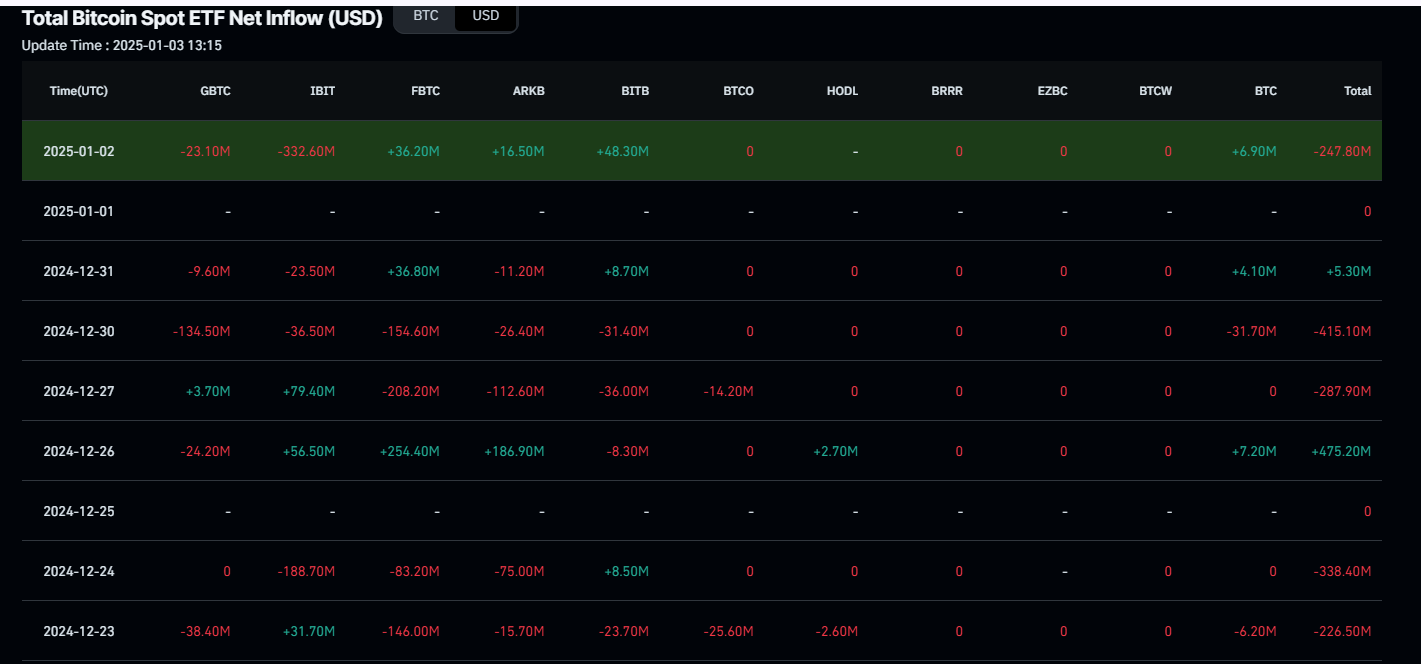
Chart of Total Bitcoin Spot ETF Net Inflows. Source: Coinglass
CryptoQuant’s on-chain data suggests that the bull market is still intact, and the current phase appears to be a cooling off period rather than the peak of the cycle. However, short-term price movements remain indecisive, and traders should be wary of smaller dips.
The Bitcoin Adjusted SOPR (Spent Output Profit Ratio) metric removes short-term noise by excluding sub-hourly transactions and applies a 7-day simple moving average (SMA) for clarity. Currently, the SOPR (7-SMA) metric is above unity, but is trending down, indicating a reduction in profits for market participants. Historically, when SOPR falls below one, Bitcoin often bounces back as the selling at a loss triggers reversals – common in bull market patterns.
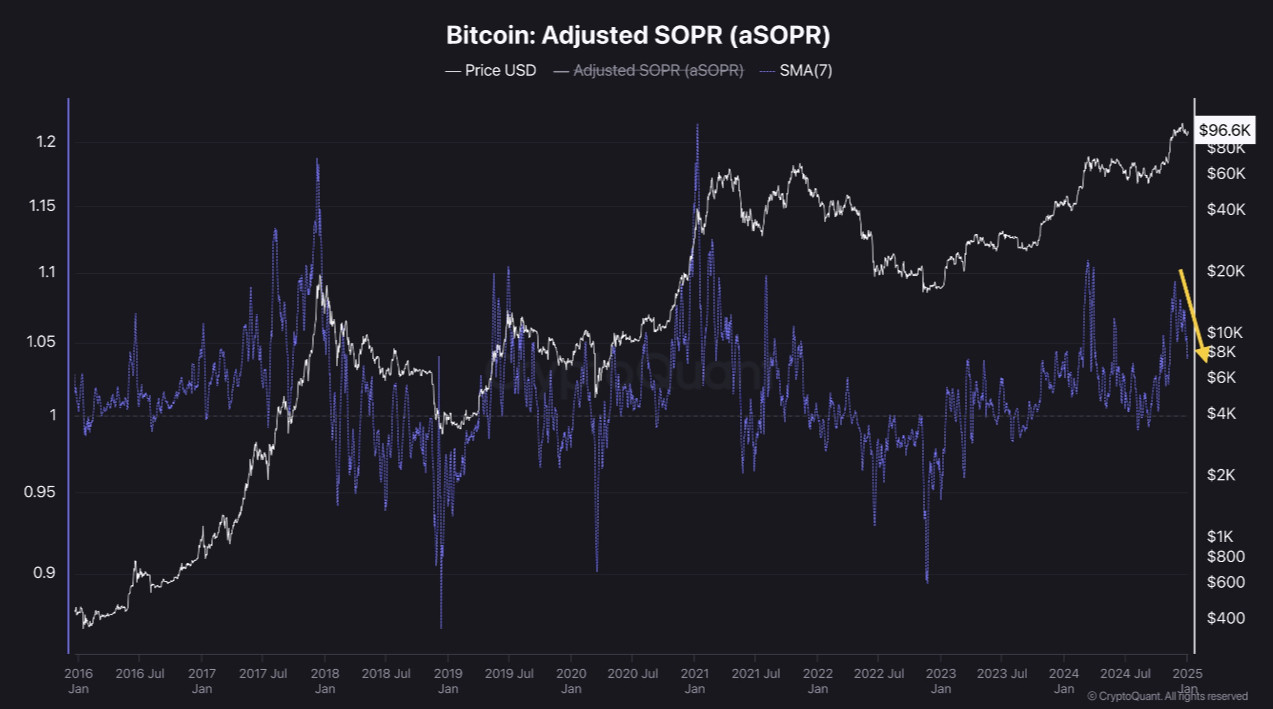
Bitcoin Adjusted SOPR chart. Source: CryptoQuant
Additionally, the Miner Position Index (MPI), analyzed by the 7-day SMA, shows the behavior of miners in relation to the sale of Bitcoin. Historically, miners sell before the halving event or near the top of the cycle. Currently, the MPI indicator is trending down, with no signs of mass transfers to the stock markets. This suggests that large mining companies hold Bitcoin as part of their assets. However, traders should remain cautious as the occasional sell-off for operating expenses is expected to continue.
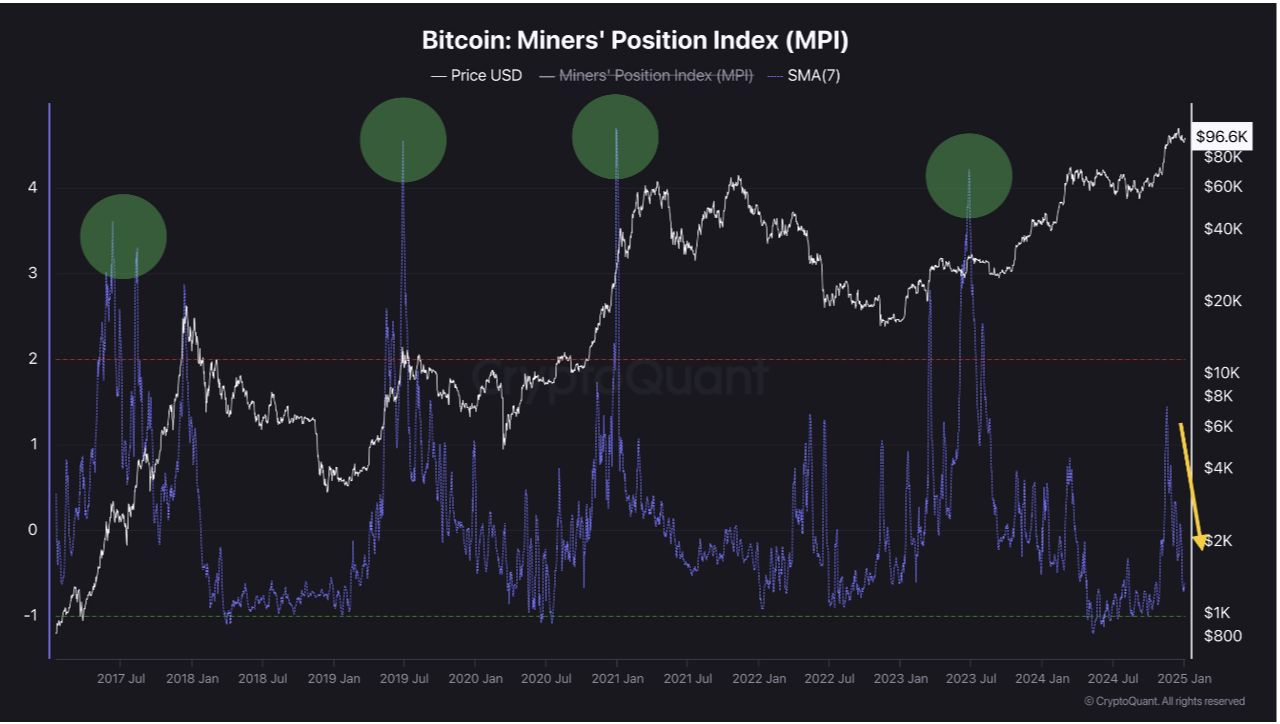
Bitcoin Miner Position Index Chart. Source: CryptoQuant
Bitcoin price found support around the 38.2% Fibonacci retracement level, pulled back from a November 4 low of $66,835 to a December 17 high of $108,353, to $92,493 on Monday and rose 4 .5% in the next three days. This level roughly coincides with the 50-day exponential moving average (EMA) at $93,550, making it a key zone. At the time of writing on Friday, BTC was trading at around $96,500.
If the $92,493 level continues to hold as support, BTC could extend its rally to retest its key psychological importance level of $100,000. A successful close above that level would extend further upside to retest its December 17, 2024 all-time high of $108,353.
The relative strength index (RSI) on the daily chart is at 49, below its neutral value of 50, and is pointing down, indicating weakness in the bullish momentum. However, the moving average convergence divergence (MACD) indicator on the daily chart is about to turn a bullish crossover. If the MACD (blue line) crosses the signal line (orange line), it will give a buy signal, suggesting an uptrend.
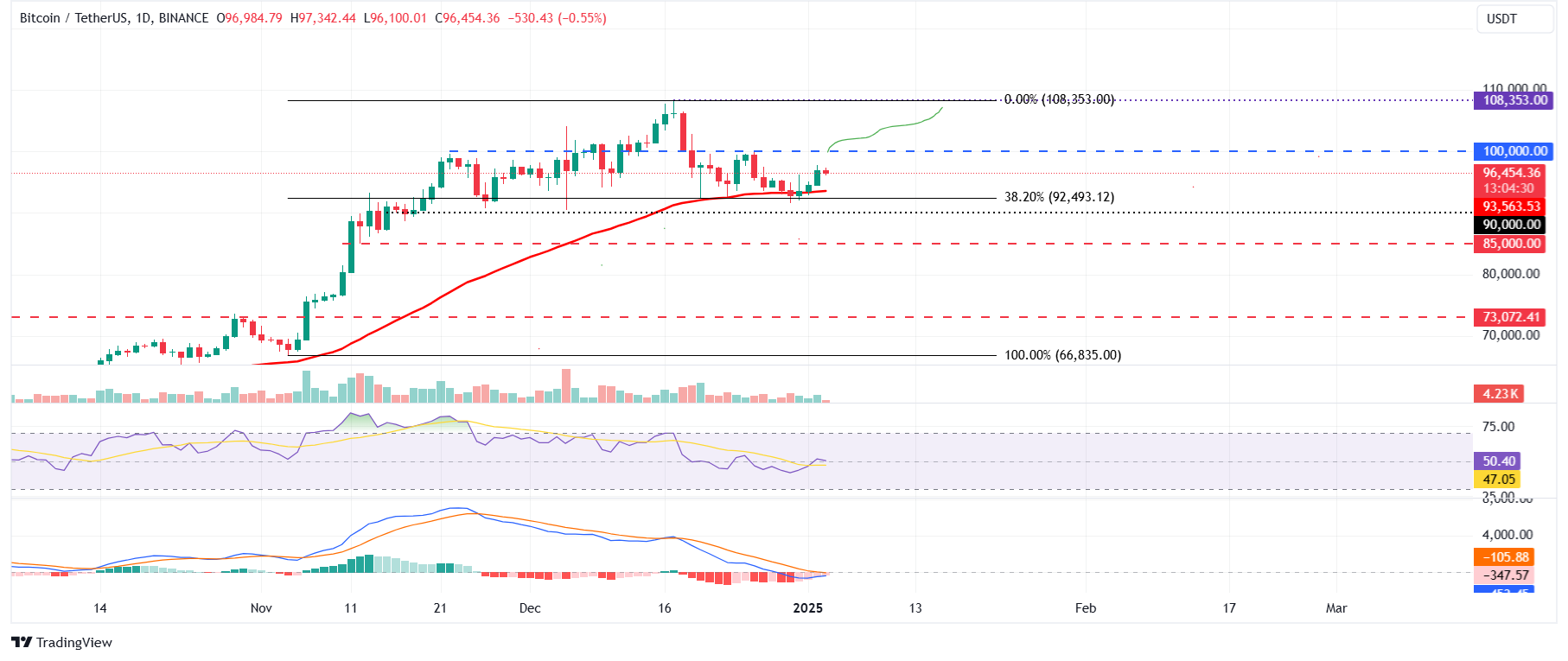
BTC/USDT Daily Chart
However, if BTC closes below the $92,493 level, it would extend the decline to retest its key support level at $90,000.
Bitcoin is the largest cryptocurrency by market capitalization, a virtual currency designed to serve as money. This form of payment cannot be controlled by any person, group or entity, which eliminates the need for third-party involvement during financial transactions.
An altcoin is any cryptocurrency except Bitcoin, but some also consider Ethereum a non-altcoin because of the forking of the two cryptocurrencies. If this is true, then Litecoin is the first altcoin, forked from the Bitcoin protocol and, therefore, its “improved” version.
Stablecoins are cryptocurrencies designed to have a stable price, with their value backed by the reserve of assets they represent. To achieve this, the value of any stablecoin is tied to a commodity or financial instrument, such as the US dollar (USD), whose supply is regulated by an algorithm or demand. The main goal of stablecoins is to enable investors willing to trade and invest in cryptocurrencies. Stablecoins also allow investors to store value as cryptocurrencies are generally subject to volatility.
Bitcoin dominance is the ratio of the market capitalization of Bitcoin to the total market capitalization of all cryptocurrencies combined. It provides a clear picture of Bitcoin interest among investors. BTC’s high dominance usually occurs before and during a bull run, in which investors resort to investing in a relatively stable, high market cap cryptocurrency like Bitcoin. A decline in BTC’s dominance usually means that investors move their capital and/or profits into altcoins in search of higher returns, which usually causes an explosion of altcoin growth.